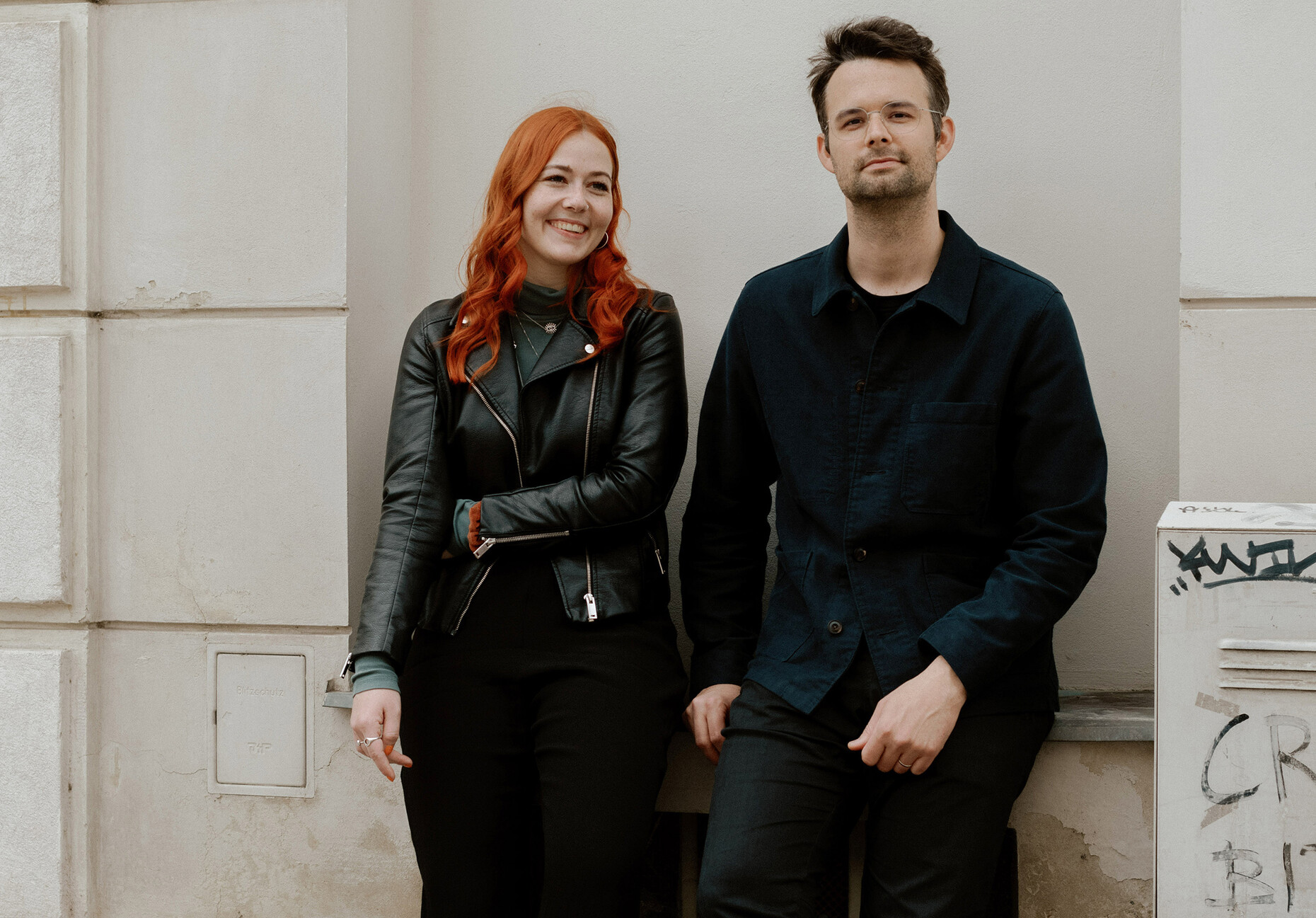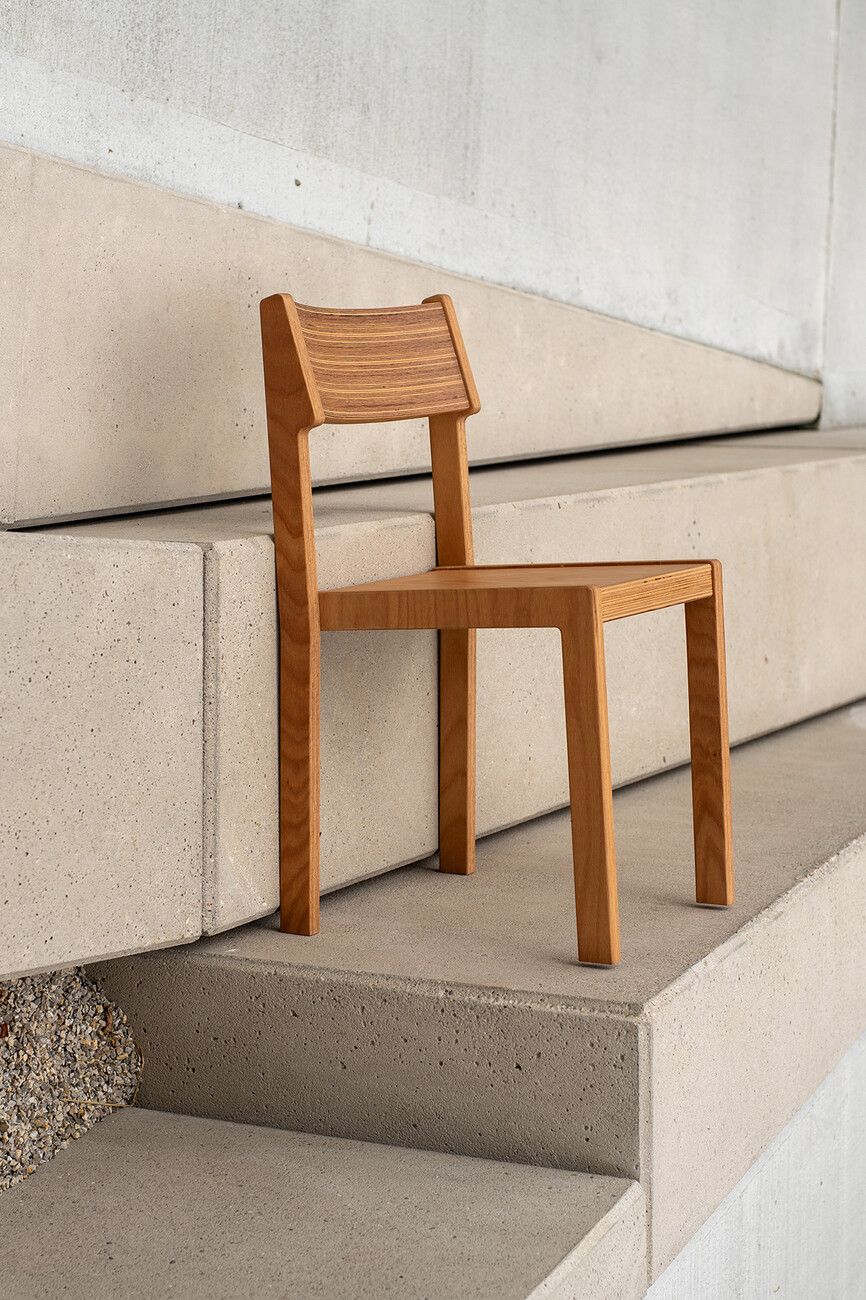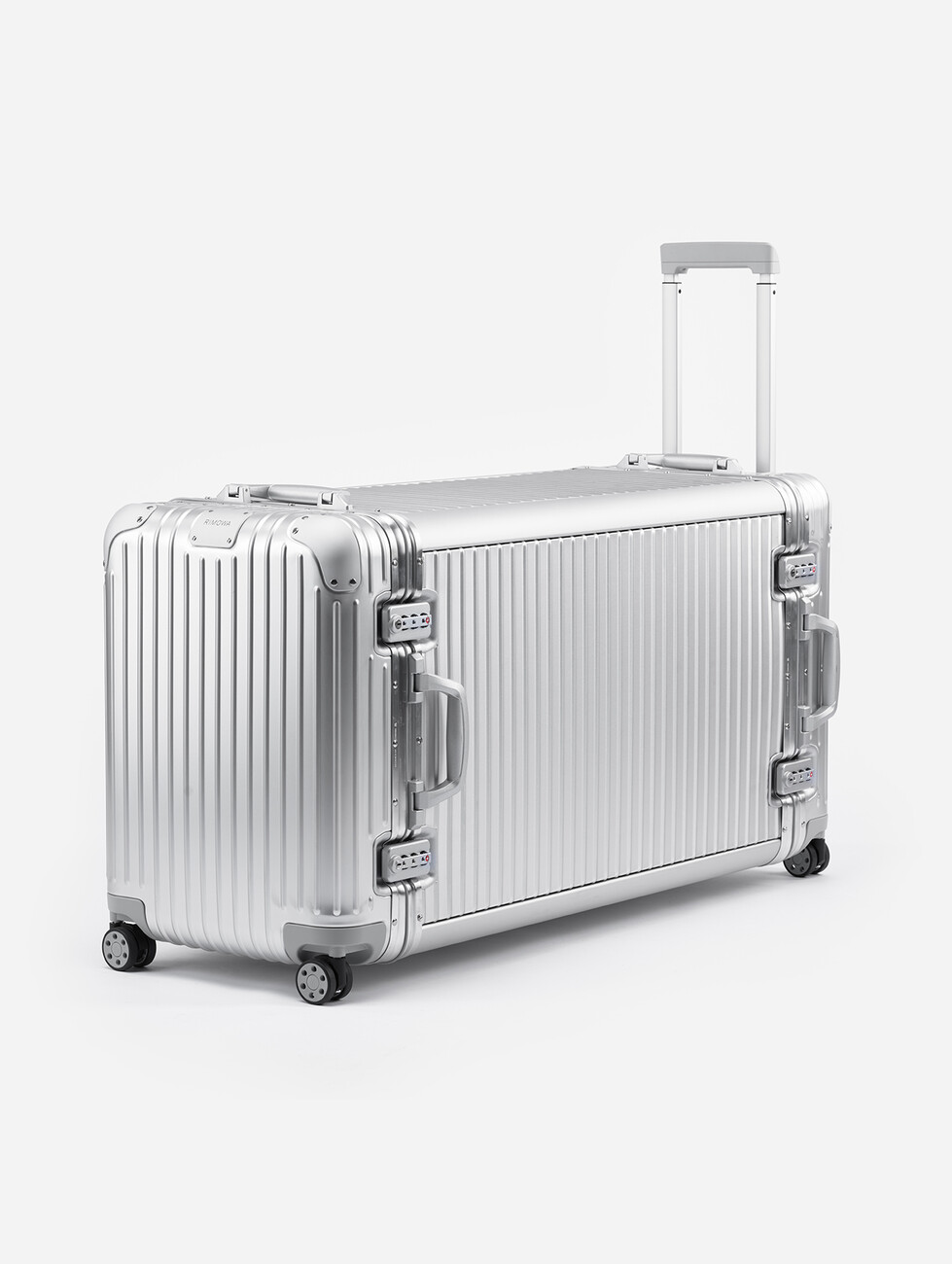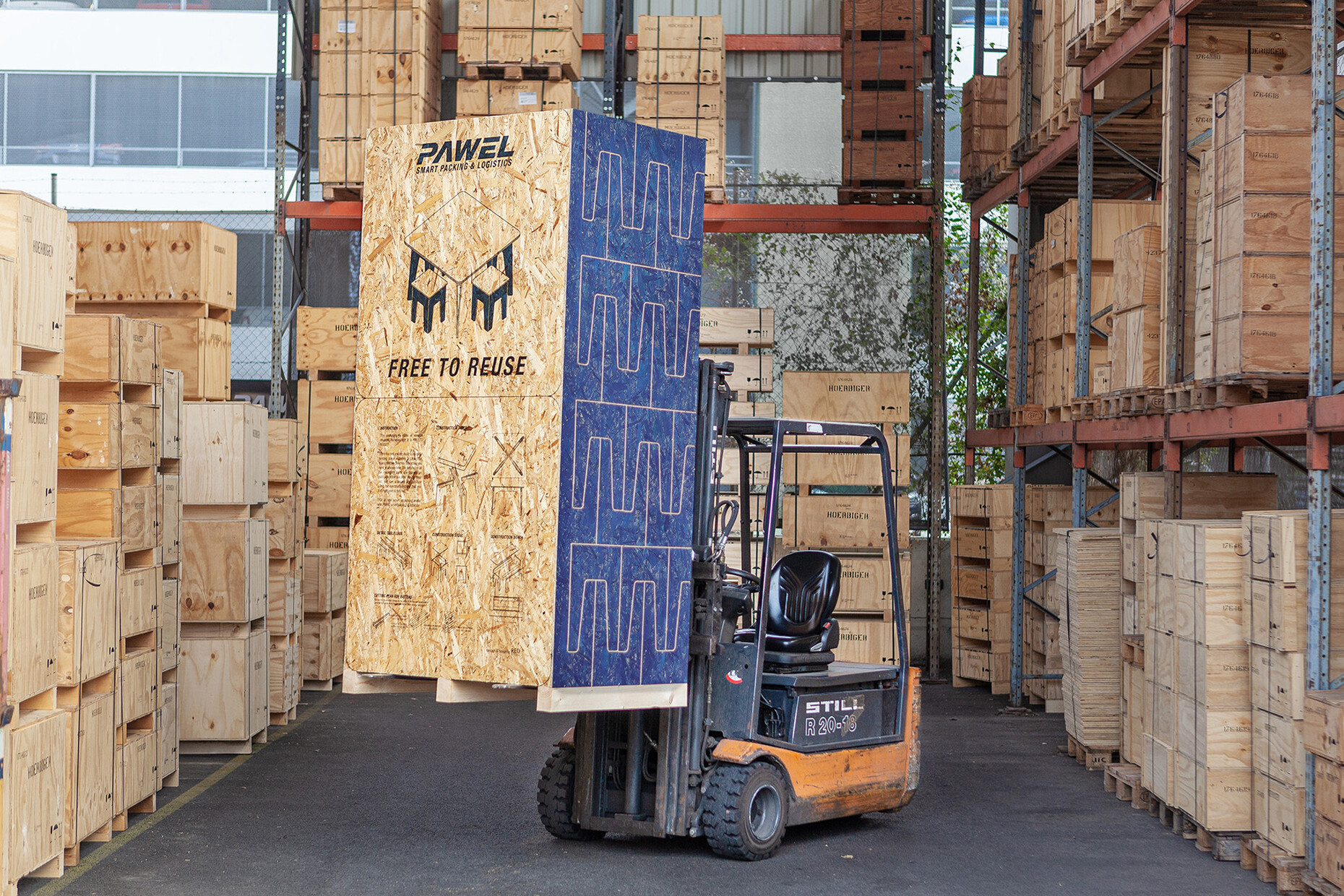YOUNG TALENTS
Design Without Frills
Barbara Jahn: Starting a project like this together requires trust and a similar, if not the same, wavelength. How did you find each other?
Kerstin Pfleger: Peter and I both studied industrial design at the University of Applied Arts, first with Paolo Piva and later with Stefan Diez, with whom we graduated. In fact, we didn't do any projects together during our studies. But we were already friends back then.
Peter Paulhart: After graduating, we worked at the same architecture firm for a short time, where it quickly became clear that we could work well together. During the lockdowns, we came up with lots of ideas to build up something new, and we even received funding for our project. That's how Studio RE.D was founded.
What ideas were those?
Kerstin Pfleger: Our main idea was actually to establish our own furniture brand. We also received funding for this. The brand is called "REDUCE.DESIGN", which is based on the idea of how we can design furniture that is reduced to its essentials. That was the essence of our original idea.
Peter Paulhart: Basically, we have great ambitions for sustainability. They were also there from the start, an incentive to think about something new and find new approaches. For us, this primarily means an intensive examination of the resources required to create a product. It's often the case that when you talk about resources, sustainability and product design, you don't get much further than the choice of materials. Many then choose wood because it grows back and is sustainable. Our approach is different, our guiding principle is "form follows resource". This includes many aspects and not just the material, such as formal criteria. We scrutinise which things are actually necessary in the form so that a product can function and be beautiful at the same time, but still remain resource-friendly. You can often do more than simply choose a natural material.
”For us, the question is always what you really need to be able to use a product.“
Is it possible to design form sustainably?
Peter Paulhart: Yes, quite often, because it's actually about consumer habits, gadgets or add-ons. Furniture often only needs decorative elements because that's how consumers imagine it. From our perspective, much of this is not necessary and is not at all sensible from a resource perspective. After all, resources are also about many other things, such as the energy required, the logistics of getting this "little frill", which also has to be on top, etc., to the place. That's why we usually end up with a very minimalist design language.
Kerstin Pfleger: For us, the question is always what you really need to be able to use a product. You don't need all the bells and whistles. I don't just mean this from an aesthetic point of view, but also from a functional point of view. How much does a product really need to be able to do, how many functions does it actually need to have? We always try to scrutinise this and also check resources with regard to production itself. How many machines are needed? How many hours of labour are involved? Our aim is to minimise all of this as much as possible.
How do you manage that?
Kerstin Pfleger: The best way to illustrate this is with a concrete example. Our approach to a product is not always the same. Sometimes one aspect is stronger, sometimes less so. At Ambiente in Frankfurt, we presented a new side table for which we use leftover materials from kitchen production. The reduction here is that hardly any new material is used that is only produced for our product. The table top is made from ceramic imitation stone, which is cut out during the production of kitchen worktops for the sink or cooker. These leftover pieces of worktop are of the best quality, but are often disposed of immediately because they can no longer be used. However, our design was created precisely for this leftover material, giving it a second life. Another approach, which is more about the production itself, can be seen in our wooden chair. Our challenge here was to see how we could produce a chair that works well and looks good using as few machines as possible. We managed to cut out all the parts for this chair with a single 3-axis CNC milling machine and from a single panel. Only a few manual operations are then required to complete the chair. The backrest and curved parts are also milled and not – as is normally the case – made from bentwood. It may be a more unconventional approach, but it saves on further mould production, which is always very resource-intensive. After all, it has to be profitable. That's why we consider it an important part of our brand to look for ways to manufacture a product in small batches.
Peter Paulhart: Of course, this idea is also a bit of a virtue in times of need, as we didn't have any major manufacturers on board at the time who could produce our designs in large quantities. In the meantime, however, we are already holding intensive talks, but we can't reveal with whom yet. "REDUCE.DESIGN" is currently geared towards producing small quantities on a small scale. You have to work in a completely different way when you know that a chair will be produced a few thousand times, for example, and not just fifty times. But for all our sustainability awareness, lack of frills and serenity, emotion is important to us. If it was only about being sustainable, we wouldn't need to make any new furniture at all. If we're honest: You can also sit on a simple wooden box, albeit in a reduced form. We believe that the story an object tells is important. Our objects should tell where they come from and how they came to be what they are now.
So there's a chair, a table, and...
Peter Paulhart: ... a new luminaire that has just been finished. It is made from a handrail. With it, we have managed to design a product from a semi-finished product that also fits our quantities. But it's also about reusing something that already exists and creating something from it. That is our understanding of resource utilisation: this production of handrails with all its machines already exists. And there is exactly this diameter – a new production is needed for another one.
Do you build your furniture here in the workshop?
Peter Paulhart: No, the models and prototypes are created here. The actual production takes place in professional partner companies, mostly in Vienna and the surrounding area. What we do ourselves, however, is the packaging and despatch of our products, which are ordered via our webshop. Although there are a few concept stores and small shops that stock our designs, most of them are sold via our own shop.
Industrial design is a broad field. Why is it furniture in particular that you are focussing on?
Kerstin Pfleger: Before my studies, I attended the technical college in Hallstatt, specialising in interior design and furniture construction. So I already made the decision to specialise in furniture back then and my enthusiasm for it is still growing. When we founded our studio, there was no predetermined direction. We could also have made jewellery. We had the most brilliant ideas for furniture.
Peter Paulhart: I, on the other hand, actually wanted to become an artist and initially studied sculpture, then later switched to architecture and finally ended up in industrial design. But we also make other objects for our customers that are not furniture – research projects, packaging or a stage on a cargo bike. But furniture is the closest thing to sculpture and has a fairly straightforward function. In contrast to very technical objects such as a bicycle, you can also take care of the history and appearance very quickly. That's why I'm also very passionate about it.
Where does the studio name "RE.D" actually come from?
Kerstin Pfleger: We called our furniture brand "REDUCE.DESIGN", which also has "Red" in it.
Peter Paulhart: We wanted to set up a studio that also works without the brand, and vice versa. We basically have two hats: one is the brand hat and the other is the designer hat. That was the plan from the start so that the concept would work.
Studio RE.D is still very young, but you've already done some successful projects that enrich your portfolio...
Peter Paulhart: We designed a trophy for the winners of the International Building Exhibition IBA for the City of Vienna. It was very much about ceramics as a material and the production process, so we used a ceramics studio near here for a different purpose. For Rimowa, we designed a so-called collectible, an art piece that was to be created from an artistic reinterpretation of a suitcase.
Kerstin Pfleger: We are also proud of our contribution to last year's Vienna Design Week, which we developed for the new "Re:Form" format. This involved matching a company, a management consultant and a design team. We were invited to work with the company Pawel packing & logistics, Stefan Pichler from denkwerkstatt and Ökobusiness Wien to create a concept for the re-use of packaging. The result was packaging in the form of furniture objects for self-assembly. The assembly instructions and cutting plans for the individual parts are printed on the outside of the large-format wooden boxes. This turns packaging waste into valuable design. For the Vienna Design Week, this was a kind of construction kit for a table and stool.
How important is it for you to be on board with such platforms?
Kerstin Pfleger: Participation in Vienna Design Week is very important to us. From a designer's perspective, this is a very valuable event. We are particularly enthusiastic about the lively exchange of ideas.
Peter Paulhart: We have been represented in various formats for three years, sometimes at several exhibition venues. As soon as Vienna Design Week is over, we're already thinking about what we could prepare for the next one. The project for 2024 is already close to being launched. Without giving too much away, it will be an installation. The theme will be a specific material and an exploration of its unique strengths. It will be exciting.
”I think it's important for us creatives to understand that our greatest achievement is to reflect on the society and the issues of our time.“
What do you think about AI?
Peter Paulhart: I see it as a tool. I think it's important to understand how you can use it. It can be very helpful for completing manual tasks faster and better. This frees up resources for the substantive aspects of our work. I think the concern about one's own job is a little short-sighted in this debate. Many jobs that were once necessary no longer exist – fortunately. Just think of a world without washing machines. When technology makes progress, we should respect it, but not be afraid of it. I think it's important for us creatives to understand that our greatest achievement is to reflect on the society and the issues of our time. This is just as true for design as it is for the visual arts or literature. We lead the discourse and find the topics that move people. AI can be a great help in the production of our contributions to the discourse. However, only we can decide which contribution is relevant in which context and at what time. Also, there are many other topics that are affected by AI that are far more sensitive than creative work. Finding suitable rules for this will be an important task in the coming years.
Kerstin Pfleger: There are always new challenges and we all have to learn to deal with them. Ultimately, the decision on how something turns out is always up to us. I think it's important to deal with it and grow with it. For me, it's not about replacing, but also about working together. We have already used AI for text and images, but not yet for design processes. But we won't rule that out in the future either.
When do you consider a piece of furniture to be a good piece of furniture?
Peter Paulhart: Sure, if it's made to a high standard. But it's also a really good piece of furniture if I enjoy it for myself and not just because I want someone to see that I have it.
Kerstin Pfleger: People like to touch good furniture, and it contributes to the room as a whole.
What comes next?
Kerstin Pfleger: Our studio has just been approached by the first big companies who want to work with us as external designers. This is very exciting and we can hardly wait to present the results. For our own brand "REDUCE.DEISIGN", we now have fresh commercial support from a managing director. Alex Liendl has recently come on board and brings a lot of new expertise and skills to our team. I have the feeling that he has taken us further in certain areas in just a few months than we would have done in three years on our own. That makes us very happy right now. What's more, we now have more time to focus on what we do best: Product design.
And the big goal for the coming years?
Kerstin Pfleger: To develop ourselves personally and our young studio and to find many more clients with whom we can work well together. It would also be nice to leave the precarious years of our student days behind us. We are on a very good path, but being a little more established would make some things easier. Above all, however, we want to be able to continue doing the work we love.











